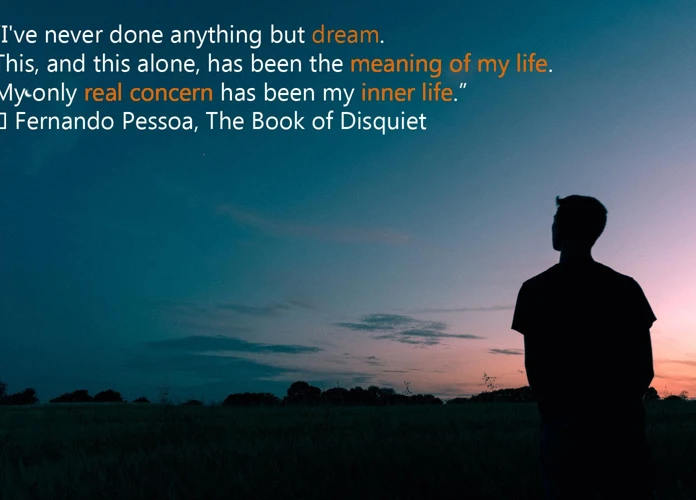Life is a mystifying tapestry of experiences, emotions, and thoughts that often leave us pondering its true meaning. Sometimes, this enigmatic journey called life can be likened to a dream, where reality and illusion interweave and blur. The phrase “Life is but a Dream” encapsulates this perplexing notion, inviting us to explore the depths of our subconscious and unravel the symbolic significance of our dreams. In this article, we will delve into the concept of dreams, the role they play in psychology, and the various techniques used to interpret them. We will also explore the symbolism within dreams, their impact on our emotions and overall well-being, and how dreams can connect to our reality. Additionally, we will examine the ancient beliefs and philosophical interpretations surrounding dreams, as well as the tools and resources available for dream analysis. So, join us on this journey of understanding as we unravel the profound meaning behind the phrase “Life is but a Dream”.
The Concept of Dreams

Dreams have long fascinated and perplexed mankind, acting as a gateway to the subconscious mind and offering a glimpse into our innermost thoughts and desires. They are a kaleidoscope of images, emotions, and sensations that unfold during the state of sleep, often leaving us questioning their meaning and significance. Throughout history, dreams have been interpreted and studied from various perspectives, ranging from psychological theories to ancient beliefs. Freudian interpretation, an influential approach to dream analysis, emphasizes the unconscious desires and repressed thoughts that manifest in dreams, while Jungian analysis focuses on the collective unconscious and archetypal symbolism. Cognitive theories highlight the role of dreams in memory consolidation and problem-solving. Surreal imagery, personal symbolism, and the interplay between dreams and emotions further add to the intrigue of dream interpretation. From Eastern philosophies to Western philosophical perspectives, dreams have been explored as a source of enlightenment, guidance, and self-discovery. Whether you dream about watching yourself sleep in an outside body, hats, or being ignored, each dream holds a unique message to decipher. Whether we see dreams as mere illusions or as a profound reflection of our inner selves, unraveling the concept of dreams leads us closer to understanding the enigmatic nature of human consciousness and the depths of our own minds.
1. The Mysteries of Dreaming
The mysteries of dreaming continue to captivate the human mind, defying complete understanding and leaving us with more questions than answers. Dreams often involve vivid and surreal experiences that transport us to alternate realities and evoke powerful emotions. While scientists have made progress in unraveling some aspects of dreaming, such as the different stages of sleep and brain activity during dreaming, many questions still remain. What exactly triggers dreams? Why do we dream certain things and not others? Is there a deeper meaning behind the symbols and events in our dreams? The topic of dreaming is a vast and complex field of study, with various theories and interpretations that attempt to shed light on the enigmatic nature of this phenomenon. Whether they are a product of our subconscious thoughts and desires or a gateway to alternate dimensions, the mysteries of dreaming continue to intrigue and inspire further exploration.
2. Role of Dreams in Psychology
The role of dreams in psychology is a topic of great interest and exploration. Within the field of psychology, dreams are viewed as windows into the unconscious mind, providing valuable insights into one’s thoughts, emotions, and experiences. They offer a unique platform for the expression and processing of repressed feelings and desires. Psychologists use various theories and approaches to interpret dreams, such as Freudian interpretation that emphasizes the role of dreams in fulfilling unconscious wishes and resolving conflicts. Jungian analysis takes a broader perspective by considering the collective unconscious and archetypal symbolism within dreams. Additionally, cognitive theories highlight the role of dreams in memory consolidation and problem-solving. Dream analysis plays a crucial role in psychotherapy, helping individuals gain self-awareness, uncover hidden meanings, and explore unresolved issues. Understanding the role of dreams in psychology allows us to delve deeper into the complexities of the human mind and harness the power of dreams for personal growth and healing.
Interpreting ‘Life is but a Dream’
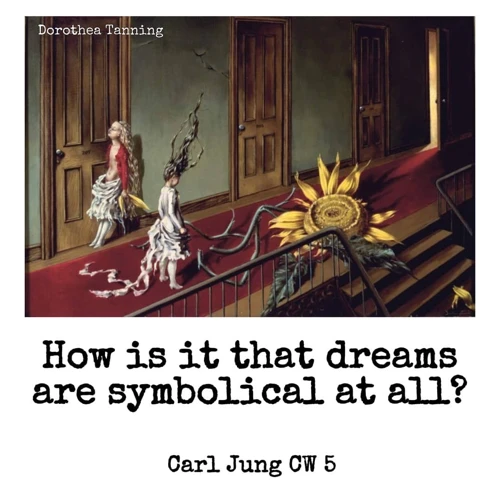
Interpreting “Life is but a Dream” involves delving into the deeper meanings and symbolism behind this philosophical statement. It invites us to contemplate the nature of reality, existence, and the transient nature of life itself. Dream analysis techniques provide valuable insights in unraveling the significance of this phrase. Freudian interpretation focuses on the hidden desires and unconscious thoughts that may be represented in our dreams. Jungian analysis explores the collective unconscious and archetypal symbols that may arise in our dream narratives. The cognitive approach considers dreams as a means of problem-solving and memory consolidation. By understanding these interpretive frameworks, we gain a greater understanding of the profound implications of “Life is but a Dream” and how it relates to our own experiences. As we navigate the intricacies of our subconscious, we may find that our dreams hold valuable messages and insights that can guide us on our journey of self-discovery and understanding the enigmatic nature of life itself. To explore specific dream interpretations such as dreaming about watching yourself sleep in an outside body or what it means to dream about hats, refer to the respective links for further analysis.
Dream Analysis Techniques
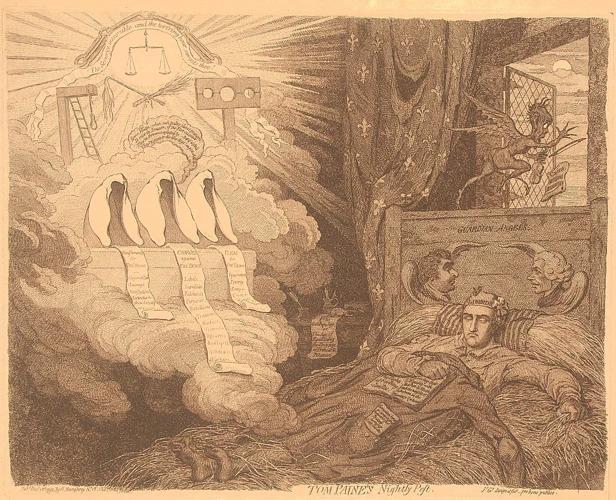
Dream analysis encompasses a variety of techniques that help us unravel the hidden meanings behind our dreams. One prominent approach is Freudian interpretation, which delves into the unconscious desires and repressed thoughts that manifest in our dreams. Freud believed that dreams served as a pathway to access our deepest desires and fears, often symbolically represented through imagery and symbolism. Another significant technique is Jungian analysis, which focuses on the collective unconscious and archetypal symbolism present in dreams. This perspective explores the universal symbols and motifs that resonate with our shared human experiences. Additionally, the cognitive approach to dream analysis emphasizes the role of dreams in memory consolidation and problem-solving. By understanding the cognitive processes at play during dreaming, we can gain insights into how our minds organize and process information. Whether you dream about watching yourself sleep in an outside body, hats, or being ignored, these techniques can provide valuable insights into the meanings behind our dreams, helping us unravel the tapestry of our subconscious mind.
1. Freudian Interpretation
Freudian interpretation, named after the renowned psychologist Sigmund Freud, focuses on the idea that dreams are a window into our unconscious desires and repressed thoughts. According to Freud, dreams serve as a means of wish fulfillment, allowing us to satisfy our suppressed urges in a symbolic and disguised manner. These desires often relate to primal instincts and unconscious conflicts. Freud introduced terms like manifest content and latent content to describe the hidden meaning behind dream symbols and events. The interpretation of dreams using Freudian analysis involves understanding the symbols and their underlying sexual or aggressive connotations. While critics have raised objections to Freud’s theories, his work has undeniably had a significant impact on the field of dream psychology and continues to influence dream analysis today. To explore more about dream interpretation, you can read about what it means to dream about watching yourself sleep in an outside body.
2. Jungian Analysis
Jungian analysis, named after renowned psychologist Carl Jung, provides a unique approach to dream interpretation. This perspective focuses on the collective unconscious, a reservoir of universal symbols and archetypes shared by all humanity. According to Jung, dreams act as a bridge between the conscious and unconscious mind, allowing us to tap into deeper layers of our psyche. By analyzing the recurring symbols and motifs within dreams, Jungian analysis aims to uncover hidden meaning and personal transformation. This approach emphasizes the exploration of personal and cultural symbolism, helping individuals gain insight into their own journey of self-discovery and individuation. Whether dreaming about watching yourself sleep in an outside body, hats, or experiencing the feeling of being ignored, Jungian analysis offers a rich framework for understanding the unique symbols and narratives that unfold within our dreams.
3. Cognitive Approach
The cognitive approach to dream analysis centers around understanding the function of dreams in terms of cognitive processes. This perspective views dreams as a mechanism for memory consolidation, problem-solving, and emotional regulation. According to this approach, dreams serve a purpose in organizing and integrating information from daily experiences into long-term memory. They provide an opportunity for the brain to process and make sense of new knowledge and emotions, facilitating learning and adaptation. The cognitive approach also suggests that dreams can offer creative solutions to problems by accessing different neural networks and promoting flexible thinking. By analyzing the content and patterns of dreams, researchers and individuals can gain insights into their cognitive processes, identify recurring themes, and potentially uncover underlying issues or unresolved conflicts that the mind is attempting to address during sleep. Understanding dreams from a cognitive perspective adds a fascinating dimension to the study of dreams and their significance in human psychology.
Exploring the Symbolism
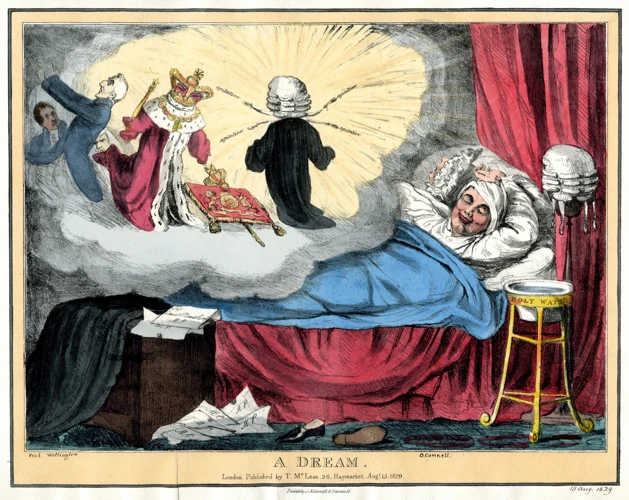
Dreams are a canvas through which our subconscious communicates with us, often using symbolism to convey its messages. Understanding the symbolism within dreams can offer profound insights into our innermost thoughts, fears, and desires. Surreal imagery, such as flying, falling, or being chased by unknown entities, can represent our aspirations, insecurities, and anxieties. These symbols may vary from person to person, making it crucial to unravel personal symbolism through self-reflection and introspection. For example, dreaming about hats may symbolize different aspects of identity, such as masks or roles we play, while being ignored in a dream might reflect feelings of rejection or invisibility in waking life. Exploring the symbolism in dreams allows us to tap into the rich tapestry of our unconscious mind and gain deeper self-awareness. By deciphering these symbols, we can unlock hidden meanings and gain valuable insights that may guide us on our journey through life.
1. Understanding Surreal Imagery
Understanding surreal imagery in dreams is a fascinating aspect of dream interpretation. Surreal images often defy logical or realistic expectations, presenting strange and fantastical scenes that challenge our understanding of reality. These surreal elements in dreams can be symbolic representations of our subconscious thoughts, emotions, and experiences. By analyzing the symbolism within these dream images, we can gain insights into our deepest desires, fears, and conflicts. Exploring the meaning behind symbols such as watching yourself sleep in an outside body can offer profound revelations about our sense of self and introspection. Each surreal image in a dream is like a puzzle piece waiting to be deciphered, providing a doorway to understanding the hidden aspects of our subconscious mind.
2. Unraveling Personal Symbols
Unraveling personal symbols in dreams is an essential aspect of dream interpretation. Each individual carries a unique set of experiences, memories, and associations, which give rise to personal symbols within their dreams. These symbols can hold significant meaning and provide insight into one’s subconscious mind. When analyzing personal symbols, it is important to consider their personal significance rather than relying on general interpretations. For example, dreaming about hats may hold a different interpretation for each person based on their cultural background, personal experiences, and associations with hats. By exploring these personal symbols, we can gain a deeper understanding of ourselves and uncover hidden emotions, desires, or unresolved conflicts. Whether it is watching oneself sleep in an outside body, encountering hats in dreams, or experiencing the feeling of being ignored, unraveling personal symbols requires introspection and self-awareness. It allows us to establish a deeper connection with our dreams and tap into the rich tapestry of our subconscious minds.
Dreams and Emotions
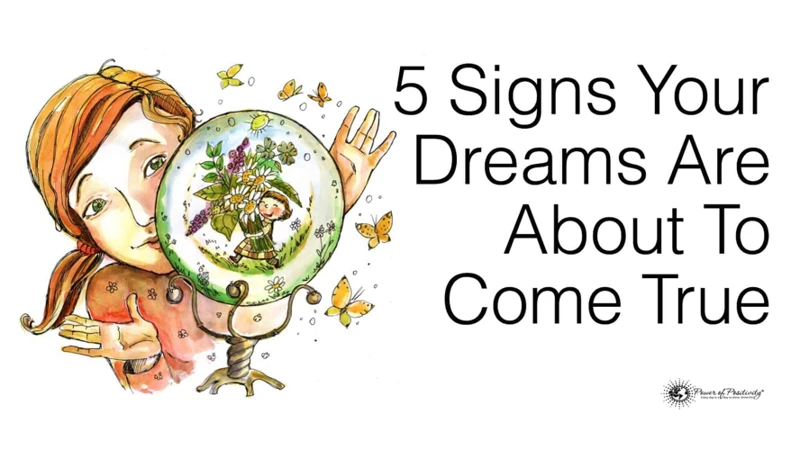
Dreams hold a profound connection to our emotions, acting as a conduit for the expression and regulation of our deepest feelings. During sleep, our minds are free from the constraints and inhibitions of wakefulness, allowing our emotions to manifest without restraint. Dreams can evoke a wide range of emotional states, from joy and love to fear and sadness. They offer us a safe space to explore and process our emotions, often bringing to the surface unresolved issues or hidden desires that we may not be consciously aware of. Dreaming about watching yourself sleep in an outside body or hats, for example, may carry symbolic meaning related to self-perception or identity. Ignored in a dream, on the other hand, could reflect feelings of neglect or isolation. The impact of dreams on our emotional well-being extends beyond the realm of sleep. Engaging with and reflecting upon our dreams can provide valuable insights into our emotional landscape, helping us to better understand ourselves and navigate the complexities of our waking lives.
1. Emotion Regulation during Dreams
Emotion regulation during dreams is a fascinating phenomenon that showcases the intricate relationship between our emotional experiences and the dream world. While dreaming, our brains are actively working to process and regulate emotions, allowing us to experience a range of feelings such as joy, fear, sadness, and anger within the dream environment. Dreams provide a unique platform for us to explore and confront our emotions in a safe and controlled space. They can serve as a means of catharsis, helping us release pent-up emotions or unresolved conflicts. Additionally, dreams can offer a form of emotional rehearsal, allowing us to mentally prepare for challenging situations and gain a sense of control over our emotional responses. Understanding how emotions are regulated during dreams provides valuable insights into the complexity of our emotional lives, both while we sleep and when we are awake. So, whether we dream about watching ourselves sleep in an outside body, hats, or being ignored, these dreams offer us an opportunity to explore and navigate the intricacies of our emotions.
2. Impact on Emotional Well-being
The impact of dreams on emotional well-being is a fascinating aspect of dream analysis. Dreams have the power to evoke intense emotions, ranging from joy and excitement to fear and anxiety. They can serve as a platform for emotional expression and processing, allowing individuals to explore and confront their feelings in a safe and symbolic realm. Dreams can also provide insight into unresolved emotional conflicts or deep-seated traumas, acting as a form of emotional release and therapy. By analyzing the emotions experienced within dreams, individuals can gain a better understanding of their own emotional state and work towards emotional healing and growth. Whether it’s a dream about watching yourself sleep in an outside body, hats, or being ignored, the emotions evoked during these dreams can hold valuable clues about one’s emotional well-being. Understanding and addressing these emotions can contribute to overall emotional health and well-being.
Interconnectedness of Dreams and Reality

The interconnectedness of dreams and reality is a fascinating aspect of the human experience, blurring the lines between what is imagined and what is real. In the realm of dreams, our subconscious mind creates vivid scenarios and narratives that often feel as tangible and authentic as our waking experiences. Lucid dreaming serves as a bridge between these two states of consciousness, allowing individuals to become aware and even control their dreams. This remarkable phenomenon demonstrates the malleable nature of our perception and the potential for conscious exploration within the dream world. Dream-Reality integration is another intriguing concept, where dreams can influence our waking lives and vice versa. A dream about watching yourself sleep in an outside body, for example, might symbolize a sense of detachment or a desire for self-reflection. Exploring the interplay between dreams and reality offers an opportunity to delve deeper into our subconscious, uncover hidden desires, and gain a richer understanding of ourselves.
1. Lucid Dreaming: Bridge between Realities
Lucid dreaming, often regarded as a bridge between realities, is a fascinating phenomenon where an individual becomes aware that they are dreaming while still in the dream state. In a lucid dream, the dreamer gains a sense of control and can actively participate in the dream narrative. This state of consciousness allows for exploration, self-expression, and even the opportunity to overcome fears and limitations. Through various techniques such as reality checks, dream journaling, and visualization exercises, individuals can enhance their ability to experience lucid dreams and consciously navigate the dream world. Lucid dreaming holds the potential for profound personal growth, self-discovery, and even therapeutic benefits. It offers a unique perspective on the interconnectedness of dreams and reality, blurring the boundaries between the waking and dreaming states of consciousness, and providing an opportunity to explore and harness the power of the subconscious mind.
2. Dream-Reality Integration
Dream-Reality integration explores the fascinating phenomenon where dreams and reality intersect, blurring the boundaries between the two realms. This concept suggests that dreams have the potential to influence and shape our waking lives. It proposes that by understanding and integrating the messages and symbolism from our dreams into our conscious existence, we can gain valuable insights and guidance. Dream-Reality integration can be seen as a bridge between the unconscious and conscious mind, offering an opportunity for self-reflection and personal growth. It enables us to tap into the wisdom of our dreams and apply their lessons to our everyday experiences. By embarking on this journey, we can uncover hidden aspects of ourselves, unlock our creative potential, and navigate life with a deeper sense of purpose and meaning. So, the next time you have a vivid dream or a surreal experience, consider how it may be intertwined with your waking reality, and embrace the potential for dream-reality integration.
Ancient Beliefs and Philosophical Interpretations
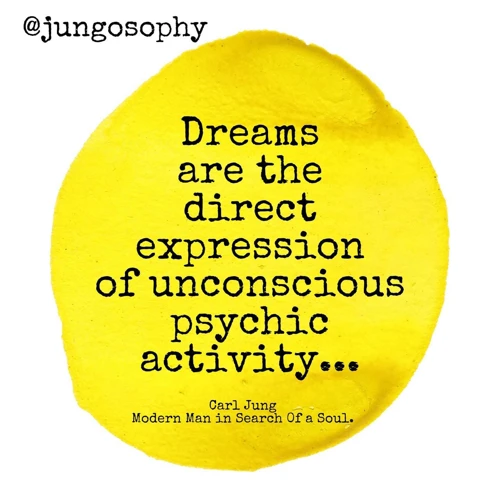
The exploration of dreams and their significance extends back to ancient times, where various cultures and belief systems attributed profound meaning to these ethereal experiences. In the Eastern philosophies of Buddhism and Hinduism, dreams were seen as a reflection of the soul’s journey through different realms of existence, providing insights into past lives and future destinies. Dream yoga, a practice in Tibetan Buddhism, sought to attain lucidity within dreams as a means of spiritual awakening and self-realization. In contrast, Western philosophical perspectives offered different interpretations. From the ancient Greeks, who believed that dreams were messages from the gods or divine entities, to the more rationalistic approach of Descartes and Kant, who considered dreams as mere illusions of the mind. The historical and cultural context within which these beliefs emerged greatly influenced the philosophical interpretations of dreams. The study of dreams continues to intrigue and captivate us, offering a glimpse into the human psyche and sparking introspection and curiosity about the hidden realms of our consciousness. So, whether we explore the dream symbolism of watching oneself sleep in an outside body, hats, or experiencing the feeling of being ignored, the ancient beliefs and philosophical interpretations surrounding dreams remind us of the rich tapestry of human thought and imagination that has sought to unravel the mysteries of the dream world throughout history.
1. Eastern Philosophies
Eastern philosophies offer a unique perspective on dreams and their significance. In many Eastern cultures, dreams are seen as a portal to the spiritual realm, a realm where communication with ancestors or deities is possible. Dreams are believed to hold deep symbolic meanings that can guide individuals on their spiritual path. Practices such as dream incubation, where individuals actively seek specific dreams for guidance or healing, are prevalent in Eastern philosophies. Dreams are also considered a source of wisdom and insight, offering glimpses into past lives or revealing hidden truths about oneself. The interpretation of dreams in Eastern philosophies involves identifying recurring symbols, archetypes, and metaphors that hold personal and universal significance. By understanding and harnessing the wisdom of dreams, individuals can gain a deeper understanding of themselves and their place in the world.
2. Western Philosophical Perspectives
Western Philosophical Perspectives on dreams have varied throughout history. Plato considered dreams as a form of divine communication, while Aristotle saw them as random products of imagination. Descartes believed dreams to be mere illusions, while Kant argued that dreams reveal unfulfilled desires and suppressed thoughts. Modern philosophers like Nietzsche and Sartre have delved into the existential nature of dreams and their connection to subjective reality. The Western philosophical exploration of dreams has contributed to our understanding of consciousness, perception, and the complexities of human experience. So, whether we analyze dreams through a Freudian lens, explore their symbolism through Jungian analysis, or contemplate their philosophical implications, dreams continue to captivate our curiosity and challenge our understanding of reality and the self.
Interpretation Tools and Resources
Interpreting dreams can be a fascinating and complex endeavor, requiring the use of various tools and resources to unlock the hidden meanings within. One valuable technique is keeping a dream journal, where individuals can record their dreams upon waking, capturing the vivid imagery and emotions experienced during sleep. This practice helps to uncover patterns, symbols, and recurring themes that can provide valuable insights into the subconscious. Additionally, online dream dictionaries and guides can offer interpretations of specific symbols or scenarios, providing a starting point for analysis and reflection. However, it is important to approach these resources with caution, as dream symbolism can be highly subjective and personal. For those seeking a deeper exploration of their dreams, professional dream therapy can provide guidance and support in understanding the intricacies of dream symbolism and their impact on one’s psychological well-being. By leveraging these interpretation tools and resources, individuals can embark on a journey of self-discovery through the lens of their dreams. href=’/what-does-it-mean-to-dream-about-hats/’
1. Dream Journaling
Dream journaling is a powerful tool for exploring the depths of our dreams and unraveling their hidden meanings. By keeping a record of our dreams in a journal, we can capture the intricate details and emotions experienced during sleep. This practice allows us to revisit our dreams later on, reflecting on patterns, recurring symbols, and themes that emerge. Dream journaling can provide valuable insights into our subconscious mind, serving as a stepping stone for further analysis and interpretation. It also helps in improving dream recall and awareness, enabling us to become more conscious participants in our dream journeys. Whether you dream about watching yourself sleep in an outside body or experiencing someone ignoring you in a dream, documenting these experiences in a dream journal can offer a deeper understanding of their significance.
2. Online Dream Dictionaries and Guides
Online dream dictionaries and guides are valuable resources for those seeking to interpret the symbolism and meaning behind their dreams. These digital platforms offer a vast collection of dream symbols and their corresponding interpretations, providing users with a convenient tool to unravel the mysteries of their subconscious. Whether you dream about watching yourself sleep in an outside body or experiencing the unsettling feeling of being ignored, online dream dictionaries and guides can provide insights and explanations that can help make sense of these puzzling dreams. By simply entering keywords or symbols from a dream into the search bar, users can access a wealth of information and interpretations, allowing them to explore the possible meanings behind their dream experiences. These resources serve as a guide, assisting individuals in their personal journey of self-discovery and understanding the messages that their dreams may hold. So, if you find yourself curious about the significance of a specific dream symbol, an online dream dictionary or guide can be a helpful companion along the path to unraveling the secrets of your dreams.
3. Professional Dream Therapy
Professional dream therapy is a specialized field that involves working with trained therapists who have expertise in dream analysis and interpretation. These professionals help individuals explore their dreams in a supportive and therapeutic environment, aiming to uncover deeper meanings and insights. Through techniques such as dream journaling, guided visualization, and active imagination, clients can gain a better understanding of their dream symbols, emotions, and patterns. Professional dream therapists may also use a combination of psychological approaches and alternative healing modalities to assist clients in integrating their dream experiences into their waking lives. By delving into the rich tapestry of dreams and working with a professional dream therapist, individuals can gain valuable insights, facilitate personal growth, and enhance their overall well-being.
Conclusion
In conclusion, the phrase “Life is but a Dream” holds a multitude of interpretations and significance. Dreams offer a glimpse into the workings of our subconscious mind and can be seen as a bridge between reality and the ethereal world of imagination. Through various techniques such as Freudian interpretation, Jungian analysis, and cognitive approaches, we can explore the depths of our dreams and uncover hidden meanings. The symbolism within dreams, the impact on our emotions, and the interconnectedness of dreams and reality all contribute to the profound nature of dream interpretation. From ancient beliefs to modern-day tools and resources, there are countless avenues to further explore the realm of dreams. So, let us continue to unravel the mysteries of our dreams, as they hold keys to our inner thoughts, desires, and understanding of the enigmatic journey called life.
Frequently Asked Questions
1. What causes us to dream?
Dreams occur during the rapid eye movement (REM) stage of sleep, which is characterized by heightened brain activity and vivid mental experiences. It is believed that dreams are a result of the brain processing emotions, memories, and sensory information during this stage.
2. Can dreams predict the future?
While some people believe that dreams can hold prophetic insights, there is no scientific evidence to suggest that dreams have the ability to predict the future. Dreams are subjective experiences that are influenced by our thoughts, experiences, and subconscious mind.
3. What is lucid dreaming?
Lucid dreaming is when a person becomes aware that they are dreaming within the dream itself. This awareness allows the individual to have some control over the dream narrative and their actions within the dream world.
4. Do recurring dreams have significant meanings?
Recurring dreams may suggest that there are unresolved issues or emotions that need attention in your waking life. They can serve as a signal for you to pay closer attention to certain aspects of your life or seek resolution for any recurring themes or conflicts.
5. Can dreams help us solve problems?
Some researchers believe that dreams can aid in problem-solving by allowing the mind to explore different possibilities and solutions. Dreams provide a unique space where creativity and unconventional thinking can flourish, potentially offering insight and new perspectives.
6. Are nightmares harmful to our mental well-being?
While nightmares can be distressing, they are a normal part of the dream experience. In fact, nightmares can serve a purpose by allowing us to process and confront our fears and anxieties in a safe environment. However, recurring nightmares or intense nightmares may be indicative of underlying psychological issues that could benefit from professional help.
7. How can dreams be used for self-reflection and personal growth?
Dreams provide a unique window into our subconscious mind, reflecting our fears, desires, and unresolved issues. Analyzing and reflecting on our dreams can help us gain insights into our own psyche, uncover hidden emotions, and facilitate personal growth and self-awareness.
8. Is dream interpretation subjective?
Yes, dream interpretation is subjective and can vary depending on cultural, psychological, and individual factors. While there are common symbols and themes that have been studied and analyzed, it is important to remember that the meaning of a dream ultimately lies within the dreamer’s personal associations and experiences.
9. Is it possible to forget our dreams?
Yes, it is common for dreams to be forgotten shortly after waking up. The fleeting nature of dreams can be attributed to the brain transitioning from the dream state to wakefulness, causing the dream memories to fade quickly. Keeping a dream journal and practicing mindfulness upon waking can help improve dream recall.
10. How can dream analysis benefit our overall well-being?
Engaging in dream analysis can promote self-reflection, emotional processing, and personal growth. By exploring the symbolism and themes within our dreams, we can gain a deeper understanding of our subconscious mind, address unresolved issues or conflicts, and enhance our overall psychological well-being.
